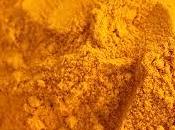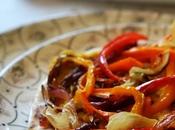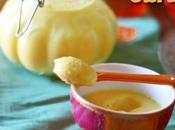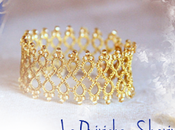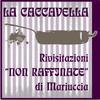(Scroll for english version)
Il dentifricio ci accompagna da sempre, fin dall’infanzia. Dovrebbe dunque essere un prodotto di cui fidarsi e a cui affidare la nostra igiene orale. Ma non è sempre così.
Nei prodotti di uso comune ci sono ingredienti dannosi per la salute, ma anche inutili per la salute dei denti. Quando si acquista un dentifricio, come per tutto il resto, bisognerebbe spendere un paio di minuti per leggere attentamente l’etichetta.
Come precauzione di base bisognerebbe evitare quelli che fanno troppa schiuma, contengono tensioattivi troppo aggressivi, come il Sodium lauryl sulfate. Evitare inoltre quelli che contengono PEG (polietilenglicoli) e trycolsan (battericida tossico usato anche in agricoltura). Quest’ultimo messo al bando in paesi come Canada e Olanda, e ancora presente in note marche italiane. Per approfondire vi consiglio di leggere questo articolo.
Io uso varie marche ecobio, alle quali affianco l’uso regolare di bicarbonato e foglie di salvia per sbiancare i denti. In questo post vi parlo di una ricetta molto semplice per preparare in casa un ottimo dentifricio naturale con pochi ingredienti e facilmente reperibili. Si può usare da solo o in abbinamento con un dentifricio tradizionale.
![Dentifricio naturale in polvere alla salvia [Natural homemade toothpaste with sage] dentifricio naturale, natural toothpaste, clay, argilla, bicarbonato, salvia, sage, tea trre oil, homemade cosmetics](http://m2.paperblog.com/i/205/2055309/dentifricio-naturale-in-polvere-alla-salvia-n-L-1ilAHD.jpeg)
Dentifrico naturale in polvere alla salvia [Natural homemade sage toothpaste]
Ingredienti (100 gr)
- 60 gr di argilla bianca
- 30 gr di foglie secche di salvia, timo e menta
- 10 gr di bicarbonato
- 6 gtt di olio essenziale di tea tree
Procedimento
Pestare e ridurre in polvere le foglie secche di salvia, timo e menta. Aggiungere argilla bianca e bicarbonato e infine l’olio essenziale. Mescolare con cura per amalgamare bene tutti gli ingredienti.
Conservare in un barattolo di vetro ben chiuso e utilizzare come un normale dentifricio.
Indicazioni
_ l’argilla bianca ha un naturale effetto purificante e lenitivo, aiuta a rimuovere la placca;
_ la salvia, il timo e la menta contribuiscono a rinfrescare l’alito e sono utilissimi per le macchie;
_ il bicarbonato essendo leggermente basico inibisce la formazione della placca batterica: E’ leggermente abrasivo, ma l’utilizzo con acqua lo rende una pasta abbastanza morbida;
_ l’olio essenziale di tea tree è antibatterico e favorisce l’igiene della bocca.
Link di approfondimento
http://www.ilfattaccio.org/2012/08/14/come-preparare-il-dentifricio-in-casa-e-perche-farlo/
http://www.spesacritica.com/2011/11/10/impariamo-a-scegliere-correttamente-un-dentifricio
http://www.greenme.it/consumare/detergenza/11371-dentifricio-fa-da-te
http://www.tuttogreen.it/come-fare-il-dentifricio-in-polvere-in-modo-naturale/
N.B. Questo tipo di ricette riflettono le mie esperienze personali e sono state testate solo su di me. Non sono un medico, ne un’esperta di cosmesi o chimica. Declino ogni responsabilità per uso improprio o eventuali allergie. Verificare le informazioni e approfondire l’argomento attraverso altre fonti può essere utile.
P. S. In questo post sono stati allegati link di aromazone. Non ho un tornaconto personale, ne si tratta di un consiglio per gli acquisti. Ritengo che in suddetto sito siano presenti schede prodotto molto dettagliate, utili per conoscenza al di là dell’acquisto.
::::::::::::::::::::::::::::::::::::::::::::::::::::::::::::::::::::::::::::::::::::::::::::::::::::::::::::::::
* The toothpaste has been with us since childhood. It should be a trusted product and whom to entrust our oral hygiene. But it is not always the case. The commonly used products may contain ingredients harmful to health, but also unnecessary for the health of teeth.
When you buy a toothpaste, as for the rest, you should spend a couple of minutes to read the label carefully. As a basic precaution you should avoid those who make too much foam, contain harsh surfactants, such as Sodium lauryl sulfate.
Also, avoid those that contain PEG (polyethylene glycol ) and trycolsan (toxic bactericide used in agriculture). The latter banned in countries like Canada and the Netherlands, and still present in well-known Italian brands.
I use various bio brands, next to which the regular use of baking soda and sage leaves to whiten your teeth. In this post I will talk about a very simple recipe to prepare at home a great natural toothpaste with a few ingredients and readily available. It can be used alone or in combination with a traditional toothpaste.
The powder formula allows an easy and long conservation. During use you may want to avoid contact with the water, just put a bit on a lid and dipping the brush wet.
Ingredients (100 gr)
- 60 gr of white clay
- 30 gr of dried leaves of sage, thyme and mint
- 10 gr of bicarbonate
- 6 drops of tea tree essential oil
Proocedure
Crush and pulverize the dried leaves of sage, thyme and mint. Add baking soda and white clay and finally the essential oil.
Mix well to blend all ingredients. Store in a tightly closed glass jar and use as a regular toothpaste.
Indications
_ white clay has a natural cleansing effect and soothing, helps to remove plaque;
_ sage, thyme and mint help freshen breath and is very useful for stains;
_ bicarbonate inhibits the formation of dental plaque. Slightly abrasive, but the use of water makes it a fairly soft dough;
_ tea tree essential oil is antibacterial and promotes oral hygiene.
N.B. This type of recipes reflect my personal experiences and have only been tested on me. I’m not a doctor, nor an expert in cosmetics or chemistry. I disclaim all responsibility for improper use or any allergies. Verify the information and read other sources may be helpful.
P. S. In this post I’ve attached aromazone links. I don’t have personal interest. I believe that the above site has product sheets very detailed, useful for knowledge beyond buy.

